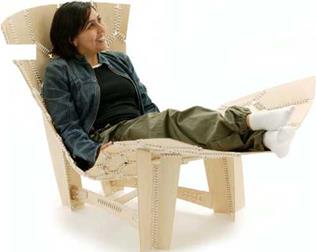Dictionary and encyclopedic sources use words like accessories, equipment, and movable objects to define furniture.1 Words can describe the performance and physical characteristics of furniture, but those who design, make, and use furniture know that furniture design extends far beyond dictionary or encyclopedic definition. Furniture design concepts lead to the production of useful items that result in tactile experiences (Figure 1.1). In nearly every case, furniture is something people experience through direct human engagement. In addition, one’s understanding and knowledge of furniture evolves with use and over time.
Designing furniture relies on intuition, judgment, design skills, engineering principles, and knowledge in a broad range of disciplines helpful with problem solving. Designing furniture requires inspiration, a concept or idea, and the commitment to give pleasure to those who use it.
The inevitable shift from designing furniture to fabricating furniture generates an appreciation for both the obvious and subtle ways in which making can influence the design process. Through the process of making furniture, one will learn about hand, power, and digital tools, material properties and working methods, assembly processes, and the time required to finish a project. Fabricating furniture demands precise skill and workmanship and often results in a sense of craft for those directly involved in the process. Making furniture does not necessarily guarantee an ability to design furniture, but it will result in an expanded knowledge of materials, tools, and joinery, which in turn generates a broader appreciation and respect for furniture design.
Furniture design is deeply rooted in the human condition. It is a social science that belongs to the humanities, an applied art that draws upon many design disciplines, and is dependent upon a working knowledge of materials and fabrication techniques. It is a holistic and interdisciplinary field of study.
Figure 1.1 The Knit chair in use. Designed by Emiliano Godoy (2004). This chair was awarded a Bronze Leaf at the International Furniture Design Competition Asahikawa 2005 in Asahikawa, Japan. Photography courtesy of John Curry, GODOYLAB, 2005.

![]() Before delving into the nature of furniture design, consider the terms furniture and design and reflect upon the fundamental and symbiotic relationships bound in the meaning and etymology of these two words.
Before delving into the nature of furniture design, consider the terms furniture and design and reflect upon the fundamental and symbiotic relationships bound in the meaning and etymology of these two words.



